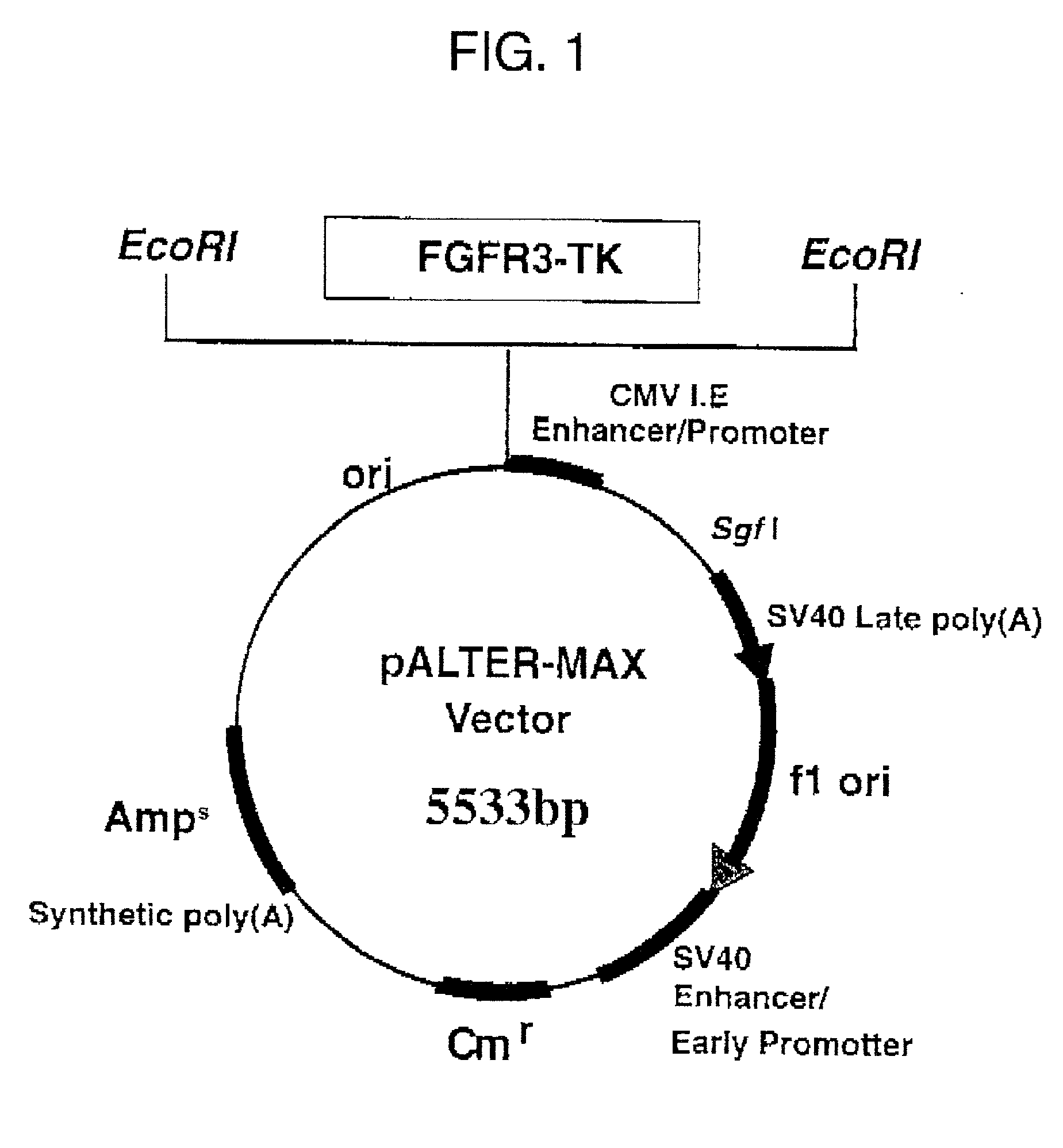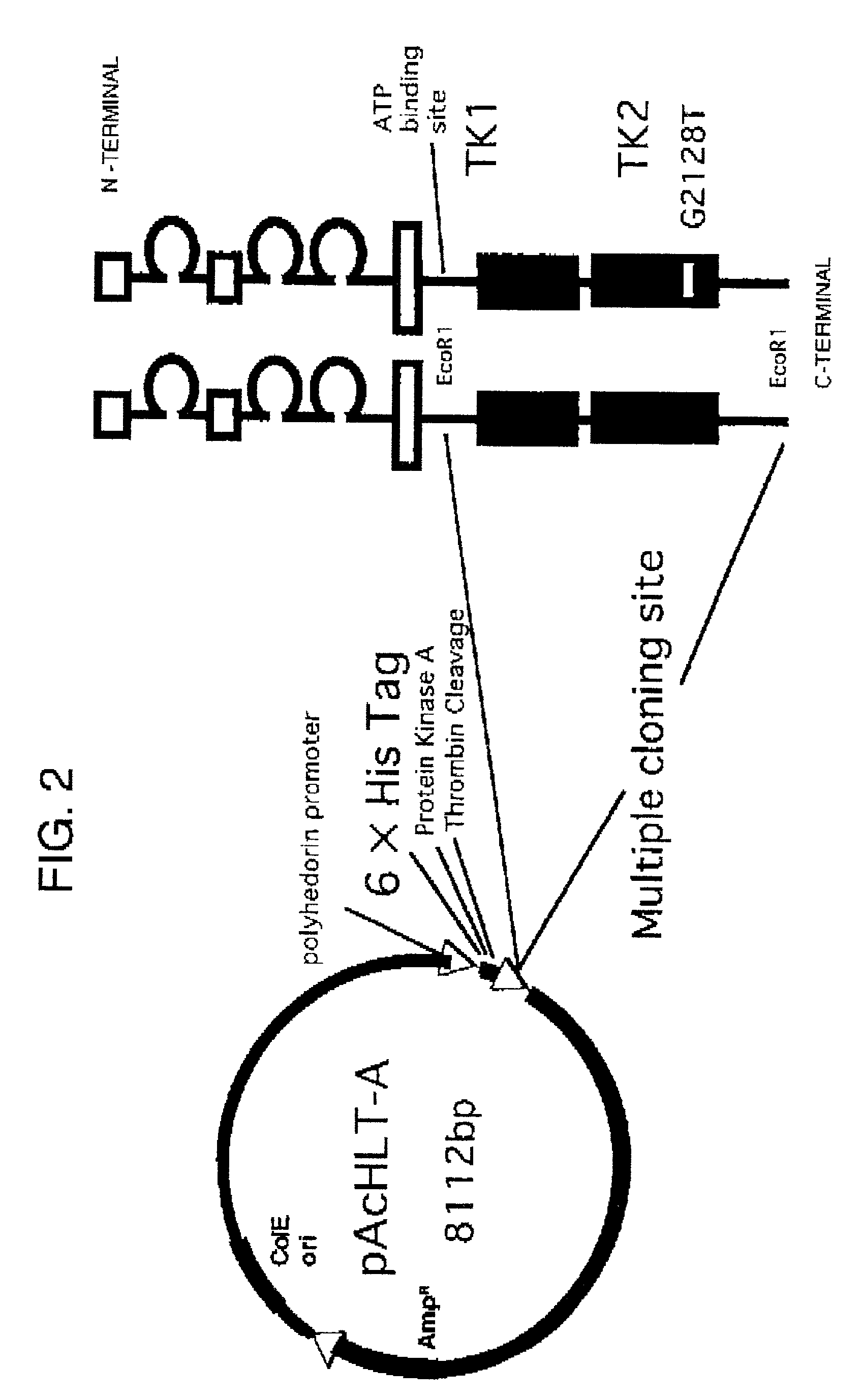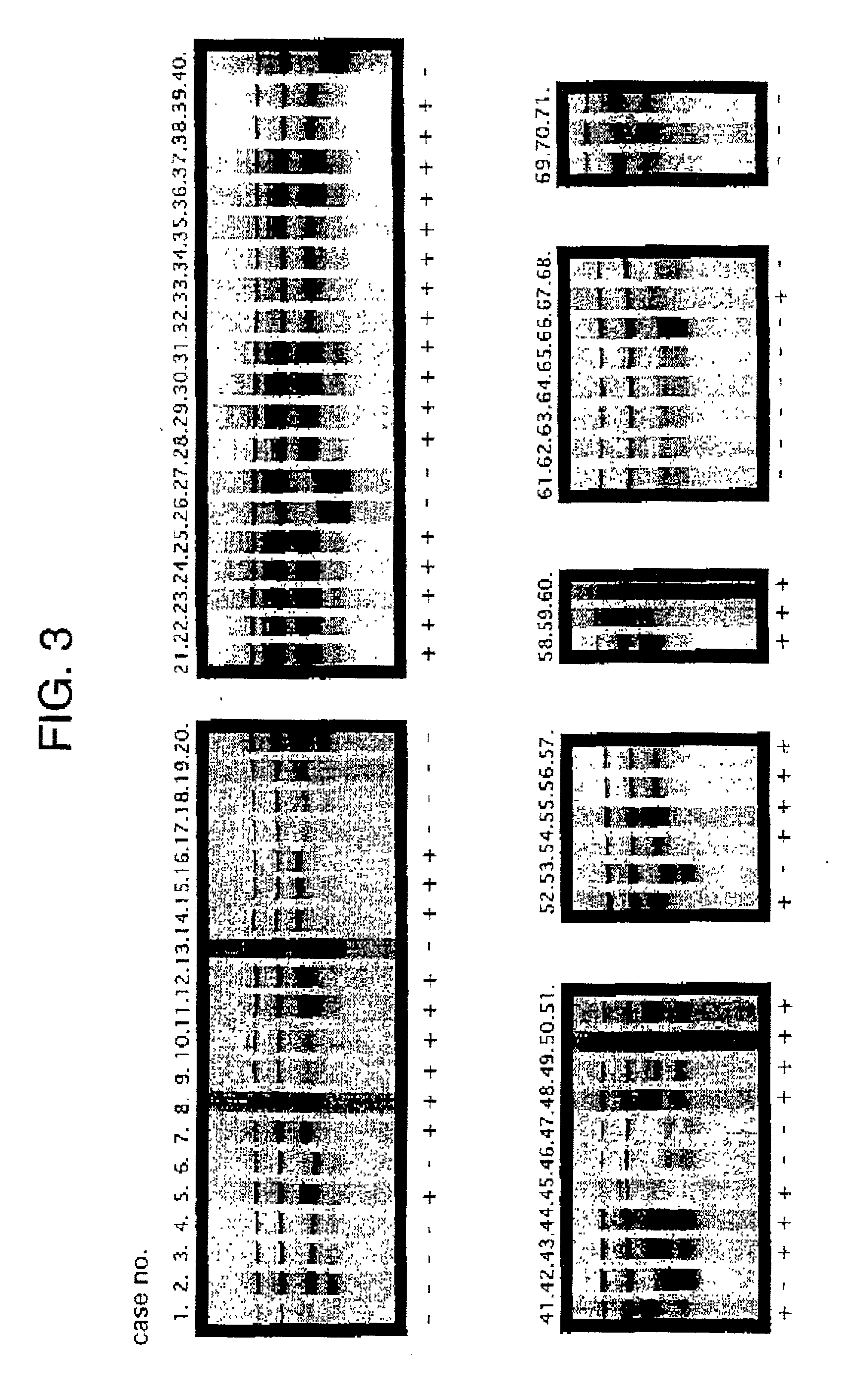Method of testing squamous epithelial cells
a technology of epithelial cells and squamous cells, which is applied in the field of testing squamous epithelial cells, can solve the problems of oral squamous cell cancer, uncontrollable normal cell differentiation,
- Summary
- Abstract
- Description
- Claims
- Application Information
AI Technical Summary
Problems solved by technology
Method used
Image
Examples
example 2
[0062] Example 2 Expression of FGFR3 protein in the tissues of oral squamous cell carcinoma and the normal epithelium
[0063] (1) The expression of FGFR3 protein was investigated using the Vectastatin ABC kit (Vector Laboratories, Inc.) by the immunoperoxidase staining method based on avidin-biotin-peroxidase complex method (ABC method).
[0064] Sections of 4 .mu.m in thickness were prepared on poly-L-lysine coated slides. After incubating at 37.degree. C. for 4 days, they were hydrated with the xylene and ethanol series, and the endogenous peroxidase was removed by MeOH / 0.3% H.sub.2O.sub.2 at room temperature for 30 minutes followed by treatment with 0.1% Triton X-100 / PBS on ice for 10 minutes, and then 0.05% Protenass-K / PBS at room temperature for 5 minutes. In order to prevent nonspecific reactions, blocking was performed by 10% goat serum / PBS at 37.degree. C. for 1 hour. Anti-FGFR3 rabbit polyclonal antibody (Santa Cruz Biotechnology, Inc.) as the primary antibody was allowed to rea...
PUM
 Login to View More
Login to View More Abstract
Description
Claims
Application Information
 Login to View More
Login to View More - R&D
- Intellectual Property
- Life Sciences
- Materials
- Tech Scout
- Unparalleled Data Quality
- Higher Quality Content
- 60% Fewer Hallucinations
Browse by: Latest US Patents, China's latest patents, Technical Efficacy Thesaurus, Application Domain, Technology Topic, Popular Technical Reports.
© 2025 PatSnap. All rights reserved.Legal|Privacy policy|Modern Slavery Act Transparency Statement|Sitemap|About US| Contact US: help@patsnap.com



